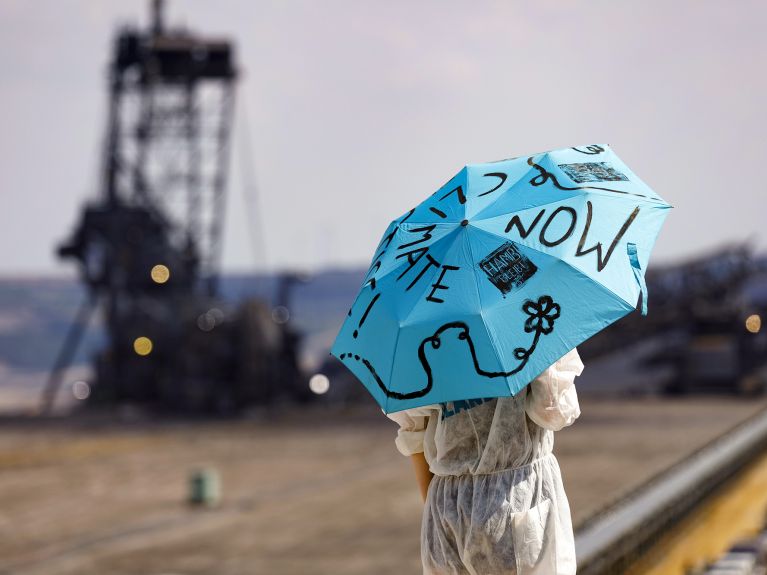“Put them to use!”
We often hear that more research is necessary to save our climate. But the necessary technologies have long existed – we just have to put them to use.

In 2010, The Washington Post ran a Tom Toles cartoon that regrettably seems to become more and more relevant from year to year. The cartoon depicts researchers in 2060 still searching for a breakthrough technology to solve climate change; what they’ve come up with is a time machine to take the scientists 50 years back to the point in time when humanity should have put a price on CO2.
All climate- protection technologies are available
From the perspective of many experts, this is pretty much the answer to the question surrounding groundbreaking climate- protection technologies: in principle, all the necessary hightech has long since been available; we now must finally generate the political will to make sure it actually gets used.
For example, the use of energy derived from wind, sun, water, biomass and other renewable sources would have to be expanded more quickly. A recent report issued by the Ren21 network showed that renewables already account for more than one quarter of the electricity consumed in 2018.
Green energy is progressing too slowly
In addition, renewable energy is often the most affordable option for generating electricity; it’s cheaper than coal or gas. “This is good news, but it’s not perfect,” says Rana Adib, secretary general of the network, which is supported by the UN’s environmental program and brings together international experts from science, government, industry and NGOs.
In other words, the transition to green energy is progressing too slowly, and this snail’s pace is due to political policy. “Renewable energies often compete against subsidized fossil fuels,” says Adib. According to the Ren21 report, much more money is still being spent on subsidizing coal, oil and gas than on support for green energy.
Transport continues to emit as much CO2 as it did in 1990
In addition, the vast majority of countries are fostering renewables solely in the production of electricity, even though more than 80 percent of the energy that is consumed is used for heating, cooling and transport; in those areas, however, renewables are not making any headway.
This is also the case in Germany, where the much-heralded Energiewende, or energy transformation, has thus far primarily been a transformation in electricity. While the share of renewables in the production of electricity has consistently increased over the years, nothing much is happening in other areas: buildings are only slowly being insulated as the associated tax incentives have not yet been decided; three-fourths of residential buildings are still heated with oil or gas; heat pumps that harvest heat from their surrounding environment remain rare; and transport continues to emit as much CO2 as it did in 1990.
Countries like Denmark prove that things can work differently
However, countries like Denmark prove that things can work differently. More than half of the electricity there comes from wind turbines and solar cells – facilities that only deliver energy when the wind blows or the sun shines. No other country in the world has such a high proportion, and this is made possible for two reasons: First, Denmark has a broad and highly advanced system of networks, with high-performance power lines to neighboring countries Germany, Norway and Sweden, thus ensuring that electricity can be either exported or imported, depending on supply.
Second, Denmark has long since combined electricity and heat. They have very flexible and efficient power plants that produce electricity and heat energy, for example from biogas. If the windmills aren’t turning, these plants step in. Excess electricity is sometimes also used to heat water that is then pumped via district heating networks to homes for use in their own heating.
Read the whole text on The German Times website
Marlene Weiss is science editor for the Süddeutsche Zeitung.